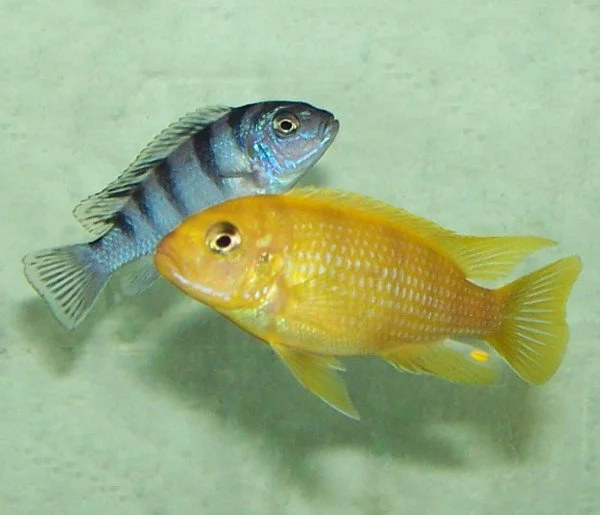 Image 1 of 1
Image 1 of 1


African - Venustus
1. Tank Setup:
Provide a spacious tank with a minimum size of 75 gallons (284 liters) for a single Venustus cichlid. Larger tanks are recommended for keeping multiple individuals or other tankmates.
Decorate the tank with rocky structures, caves, and hiding spots to mimic their natural habitat.
2. Water Parameters:
Water temperature: 75°F to 80°F (24°C to 27°C).
pH level: 7.6 to 8.6 (alkaline water).
Hardness: Moderately to highly hard water.
3. Filtration and Water Quality:
Use a good filtration system to maintain excellent water quality. Regular water changes are essential to keep ammonia and nitrite levels low.
4. Diet:
Venustus cichlids are omnivores, but their diet tends to be more carnivorous. Offer a varied diet that includes high-quality pellets, flakes, and frozen or live foods such as brine shrimp, bloodworms, and small feeder fish.
Incorporate some vegetable matter, such as spirulina-based foods, to ensure a balanced diet.
5. Tankmates:
While Venustus cichlids can be relatively peaceful compared to some other cichlid species, they can still become territorial, especially during breeding. Choose tankmates carefully, avoiding overly aggressive species or those with similar body shapes and colors.
6. Behavior and Territoriality:
Venustus cichlids are generally less aggressive than some other cichlid species, but they can still exhibit territorial behavior, especially during breeding. Provide plenty of hiding spots and cover to reduce aggression.
7. Breeding:
Breeding Venustus cichlids can be challenging due to their specific requirements. Provide flat surfaces or caves for the female to lay eggs. Males may become more territorial during breeding.
It's a good idea to keep a larger group and let the fish pair off naturally to minimize aggression.
1. Tank Setup:
Provide a spacious tank with a minimum size of 75 gallons (284 liters) for a single Venustus cichlid. Larger tanks are recommended for keeping multiple individuals or other tankmates.
Decorate the tank with rocky structures, caves, and hiding spots to mimic their natural habitat.
2. Water Parameters:
Water temperature: 75°F to 80°F (24°C to 27°C).
pH level: 7.6 to 8.6 (alkaline water).
Hardness: Moderately to highly hard water.
3. Filtration and Water Quality:
Use a good filtration system to maintain excellent water quality. Regular water changes are essential to keep ammonia and nitrite levels low.
4. Diet:
Venustus cichlids are omnivores, but their diet tends to be more carnivorous. Offer a varied diet that includes high-quality pellets, flakes, and frozen or live foods such as brine shrimp, bloodworms, and small feeder fish.
Incorporate some vegetable matter, such as spirulina-based foods, to ensure a balanced diet.
5. Tankmates:
While Venustus cichlids can be relatively peaceful compared to some other cichlid species, they can still become territorial, especially during breeding. Choose tankmates carefully, avoiding overly aggressive species or those with similar body shapes and colors.
6. Behavior and Territoriality:
Venustus cichlids are generally less aggressive than some other cichlid species, but they can still exhibit territorial behavior, especially during breeding. Provide plenty of hiding spots and cover to reduce aggression.
7. Breeding:
Breeding Venustus cichlids can be challenging due to their specific requirements. Provide flat surfaces or caves for the female to lay eggs. Males may become more territorial during breeding.
It's a good idea to keep a larger group and let the fish pair off naturally to minimize aggression.






